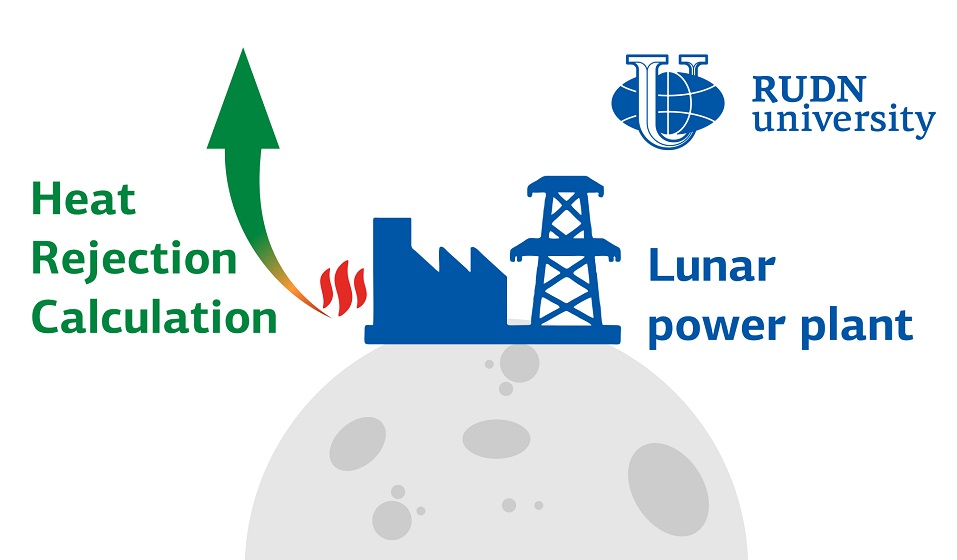RUDN Engineers Have Calculated the Parameters of the Heat Rejection System for a Lunar Power Plant
The colonization of the moon is not only a topic for science fiction. This is a likely stronghold for further study and exploration of space. One of the main challenges that future space missions will face is to provide a reliable source of power. For the Moon, power plants need to be powerful, which is why there is a risk of overheating. This requires heat rejection systems that can work effectively even in extreme conditions. RUDN engineers presented a model for calculating such a radiator — according to the given conditions, it is possible to accurately calculate all the necessary parameters.
“The colonization of the moon should be an important step in preparation for the exploration of Mars. Moon bases will have high power requirements. They should provide energy-intensive scientific experiments, mining and processing of minerals, and surface studies. Therefore, it is very important to provide a reliable and powerful source of energy. Due to the extremely low temperatures and harsh environmental conditions in space, it is quite difficult to reject excess heat from power plants. Therefore, for the efficient operation of the power plants, highly efficient heat rejection systems are needed,” Sergey Smirnov, PhD, Associate Professor of the Department of Power Engineering of RUDN University.
To calculate the radiator according to the proposed model, four main parameters are needed: the amount of heat to be rejected, the minimum temperature of the working fluid, the thermodynamic properties of the fluid, and the ambient temperature. The last parameter is especially important in the case of the Moon, since the conditions on the satellite are extreme. It is assumed that the power plant is located at the pole of the moon, and the working fluids of the radiator are helium and ammonia.
With the help of the new model, it is possible to calculate in detail all the parameters of the radiator, up to the number of pipes and their length. Also, RUDN engineers were able to calculate the possibilities of various refrigerants and their flow regimes. For example, liquid ammonia gives more possibilities in changing the geometric parameters of the radiator, without reducing power. The results of the study are planned to be used in upcoming programs related to space power units of Nauka-Power Technology LLC.
“We have improved the calculations for the heat rejection system. With the new approach, it is easier to determine the main design parameters of the radiator. In addition, it is possible to evaluate the capabilities of the refrigerant and the flow regime. It is important to note that the calculation method is not limited to a specific refrigerant — any refrigerant can be considered,” Hassan Khalife, Assistant Professor, Department of Power Engineering, RUDN University.
The results are published in Symmetry.
Sergey Ivanov, a scholar from St. Petersburg, has been named the first winner of RUDN University’s International Prize for Scientific Achievements in Mathematics, worth 5 million rubles.
Products derived from microalgae represent a cutting-edge development in the field of bioeconomy. The potential of this biological resource was discussed at the international research seminar “Foundations for a Green Sustainable Energy”, part of the BRICS Network University’s thematic group on “Energy”. The event was organized by the Institute of Ecology at RUDN University.
Ambassadors of Russian education and science met at a conference in RUDN University to discuss how they can increase the visibility of Russian universities and research organizations in the world, and attract more international students in Russia.
